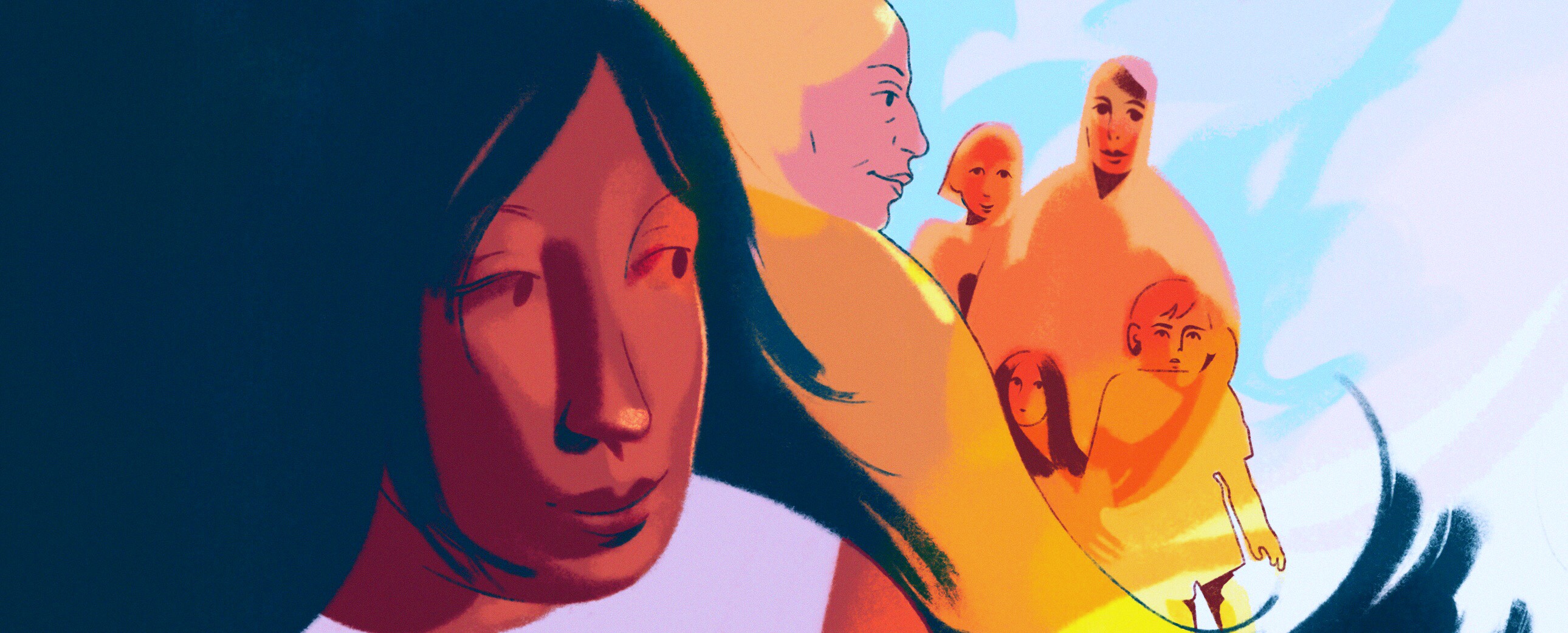Exhausted, my mother sat on the stoop of one of the many four-story brick buildings that dotted our old neighborhood of Borough Park, Brooklyn. It was cold, but she was too tired to care. She had dropped my siblings and me off at school and, in the few hours that remained before our return, she had to weigh her options carefully. Her present circumstances were bleak – jobless, penniless, with three children, and homeless after being turned away by all of her community acquaintances who didn’t have the room, money, or patience to put up with the charity case that our family had become.
“I sat there watching the other families walking down the street,” my mother recalled 33 years later, as we sat together drinking tea in the living room of my large Massachusetts colonial. “The young Hasidic mothers with their children and all of the kind, Hispanic women in the neighborhood would walk past me and go into their homes. And I realized that I didn’t have a home to bring my children to. We were going to have to go into a homeless shelter. It was the worst feeling as a mother.”
It was there on that stoop in 1984 that the elderly white lady with the raspy voice, who owned an apartment building a few doors down, found her. She had been alerted to my mother’s presence by a friendly neighbor who remembered my mother from better days. In the hours before school let out, the stranger offered her spare bedroom, rent-free, to a homeless Pakistani woman and her three children. That offer was a turning point in our lives, saving us from homeless shelters and destitution. And it created a folklore-like legend in our family about the kindly woman who opened her home to us.
But as decades passed, her name disappeared from our collective memories. We knew her simply as “the Landlady.” She had light hair and a round face split with wrinkles, but was otherwise featureless in my memory, a low rumbling voice that said little but was always kind. I remember the swish of housecoats as she walked by in slippers, and the distinct smell of beer mixed with tobacco.
My mom, my siblings and I, as new immigrants to the U.S. I believe I was about two years old. This is before our luck turned south and we met the Landlady.
At first, she was simply the main character of a story we told each other during tough periods to remind ourselves about the goodness of humanity. A fable of hope. Over time, however, as mounting xenophobia and Islamophobic rhetoric began to sweep the country, the Landlady became a larger symbol for me of what it really means to be American at a time when my children were beginning to question their place in an increasingly polarized nation.
Growing up as the child of immigrants, I always felt half-American despite my New York birth certificate and blue passport. We were brown and poor with parents who spoke in funny accents and had old-fashioned ideas about clothes, culture, and propriety. We were in a tug of war between two identities. As much as I hated it as a child, I would look at my family and my community and understand why we reeked of otherness to “real” Americans – a term I equated with blonde hair, white skin and pedigrees far removed from any foreign cultural influence.
But my children never really experienced that otherness. Their parents were children of the West, born and bred in the U.S. and Canada. They had lived as expats in foreign countries but home was always America. So, when they saw the angry faces on television, brandishing Tiki torches, proclaiming loudly that immigrants were to be feared and Muslims were to be banned, I was suddenly faced with new questions about their place in white America. My son began to pay close attention to the brownness of his skin and how his white classmates’ experiences were so far from his own. My daughter began to suffer the adolescent taunts of class bullies who praised Donald Trump’s views on Muslims and declared us outsiders. I sought to console my children, even as I withdrew into myself, tired of having to prove that I belonged in the country I was born in.
On those days, when I struggled to shield my children from the white backlash, the Landlady’s hazy visage and her act of charity became the balm that allowed me the strength to reassure them that we still mattered.
But the Landlady’s legend was no longer satisfying to me. Even as I comforted my children, I was at war with myself, suddenly questioning the motivations of a woman who my family had long considered a fairy godmother. For years, I tried to take the Landlady’s generosity at face value. But in a world that was becoming increasingly split into silos based on religion, race and ethnicity, I felt a pull to try to understand why the Landlady, as a white woman, would see something worth saving in a family of brown immigrants from a world apart. I wanted to put a name and a face to the blurry image I had of the kind lady in housecoats and slippers. I knew I had to discover who she was as a person to try to make sense of what she did for us. But her identity was a mystery to me.
For the complete story, please visit Narrative.ly
Shaheen Pasha is a journalist and an assistant professor of international journalism at The University of Massachusetts Amherst. Her work has appeared in publications such as The Wall Street Journal, CNNMoney, Thomson Reuters, The Daily Beast and The Dallas Morning News among others. She’s currently writing a memoir on immigration and madness in 1980s Brooklyn.




